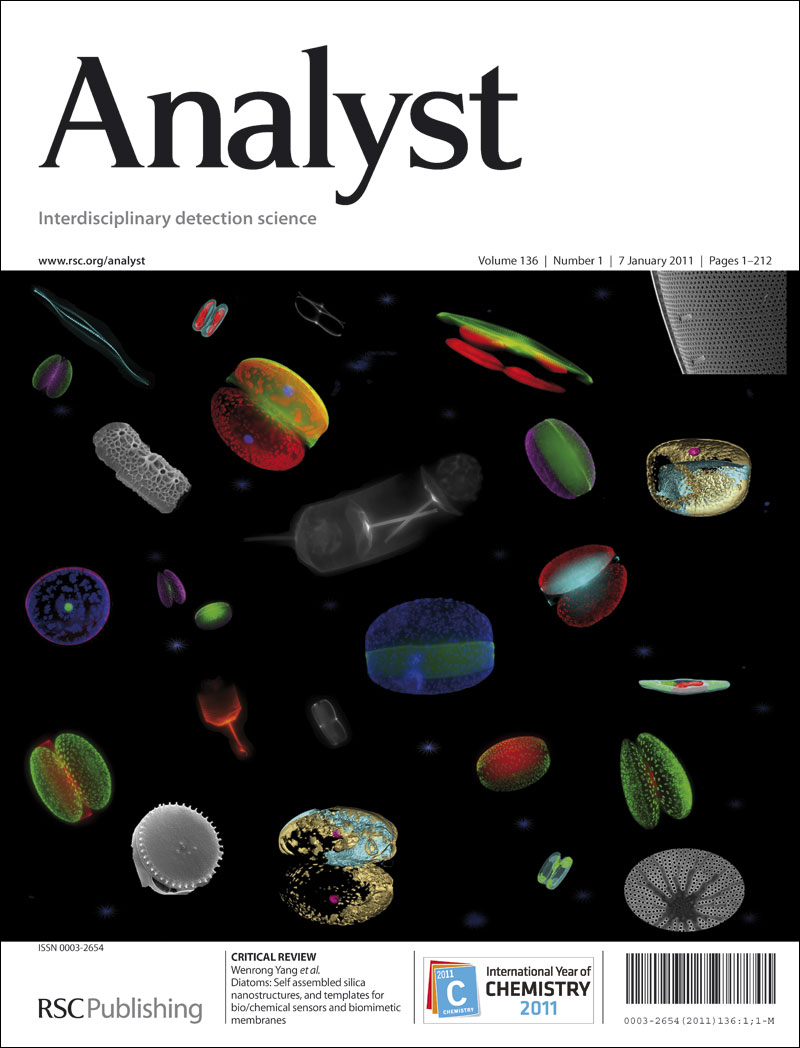Sensitive detection of small extracellular vesicles using gold nanostar-based SERS assay
IF 3.6
3区 化学
Q2 CHEMISTRY, ANALYTICAL
引用次数: 0
Abstract
Small extracellular vesicles (sEVs) are lipid bilayer-bound vesicles that carry critical biomarkers for disease detection. However, the inherent heterogeneity and complexity of sEVs molecular characteristics pose significant challenges for accurate and comprehensive molecular profiling. Traditional analytical methods, including immunoblotting, enzyme-linked immunosorbent assay (ELISA), and flow cytometry, exhibit several limitations, such as being time-consuming, requiring large sample volumes, and demonstrating relatively low sensitivity. Therefore, there is an urgent need to develop a highly sensitive and specific assay for the reliable detection of sEVs. Surface-enhanced Raman scattering (SERS) assays have emerged as a promising approach for sEV detection, offering advantages including high sensitivity and specificity. In the proposed SERS assay, SERS nanotags – comprising nanoparticles coated with Raman-active molecules and conjugated with antibodies – are employed to label surface-bound molecules on sEVs. This approach facilitates the generation of a high-intensity signal from molecules present in low abundance. Recently, anisotropic nanoparticles, such as star-shaped nanostructures, have garnered interest due to their ability to significantly amplify generated SERS signals for ultra-sensitive biomarkers detection. In this study, we explore the application of gold nanostars (AuNSs) as SERS nanotags for the detection of sEVs. In principle, AuNSs-based SERS nanotags were used to label EpCAM protein, that can be found on the surface of cancer cell derived sEVs, then sEVs labelled SERS nanotags were captured with CD9 conjugated magnetic beads to form immunocomplex, which exhibits SERS signal. Our results demonstrate that the proposed SERS assay utilizing AuNSs provides high specificity and sensitivity, with a detection limit as low as 2.47 × 103 particles/µL. Furthermore, the assay was tested with spiked plasma samples (cancer cell-derived sEVs spiked in healthy plasma), showing that its specificity remains unaffected by the presence of plasma. These findings suggest that the SERS assay incorporating AuNSs holds significant promise as an effective and reliable detection method for potential clinical applications.求助全文
约1分钟内获得全文
求助全文
来源期刊

Analyst
化学-分析化学
CiteScore
7.80
自引率
4.80%
发文量
636
审稿时长
1.9 months
期刊介绍:
"Analyst" journal is the home of premier fundamental discoveries, inventions and applications in the analytical and bioanalytical sciences.
 求助内容:
求助内容: 应助结果提醒方式:
应助结果提醒方式:


